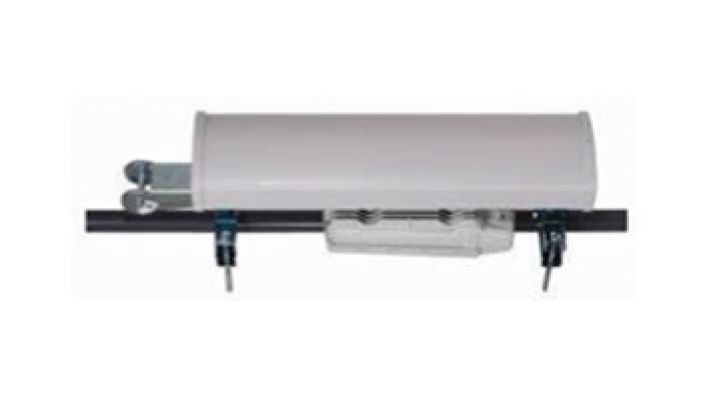It's like a WiMax router with all the extras stripped out.
Motorola is trying to gain ground in the smart grid market with a broadband access point -- and likely other pieces of equipment -- that is retrofitted for utility applications that, ideally, will make it less expensive for them to build and run their own networks.
The CAP 36320 is based around the 802.16e protocol, the same one used in WiMax equipment. But unlike WiMax equipment made for telecom companies, Motorola's router won't support things like roaming capabilities. Power meters don't move around, after all. By stripping out the telecom nuances, utilities can reduce the amount of back-end equipment to run a network.
"We've stripped out all of the overhead that you need for cellular...A full mobility solution is ten times as expensive," said Scott Propp, senior director of engineering and technology at Motorola during a meeting at the Green: Net conference earlier this week. "You don't need about half the servers."
In another tweak, the router operates in the 3.65 spectrum, which is not a public spectrum. Therefore, customers that adopt it may -- potentially -- have to worry less about interference. At the same time, getting a license from the FCC is somewhat easy. It only costs about $500, Propp said.
On-Ramp Wireless in San Diego is taking a similar strip-out-the-roaming approach to its neighborhood area network equipment.
The big question in smart grid now is who will make it. Comparatively young companies like Silver Spring Networks, EnerNoc, SmartSynch, Tendril Networks and others popularized the concept of an intelligent grid. After it took off, old guard networking companies like Cisco, Motorola and Nokia Siemens jumped in. Acquisitions and mergers have already begun. Will utilities go with the trusted names or will the test data and trials favor the startups? Billions hang in the balance.
How big is the market? Propp said that Motorola has done some calculations. A national smart grid could be established with 350,000 of the routers it sells.
Companies are also taking different philosophical approaches. Silver Spring specializes in a mesh network that can provide somewhat comprehensive coverage, but can't provide the same levels of bandwidth as equipment from WiMax providers like Grid Net.
SmartSynch asserts that utilities are willing to connect to homes and individual meters by riding on existing cellular networks owned and operated by companies like AT&T. Others argue that utilities -- which live in fear of service outages -- are terrified that third party networks only mean headaches and complaints.
Propp argues that a mix will evolve. Utilities will likely want to own and operate any equipment that connects substations, transformers and other large pieces of equipment. Many utilities, however, may try to cut their own costs by offloading daily data from meters to private channels on public networks.
Motorola itself is in the midst of a transition. The company effectively will be split in two. The division Propp works for will concentrate on industrial equipment. Thus, his group in Motorola will concentrate on equipment for connecting utilities to substations. It likely won't make neighborhood networking equipment.
The other half of the company will focus on the consumer market, which has already shown off home area networking equipment.




